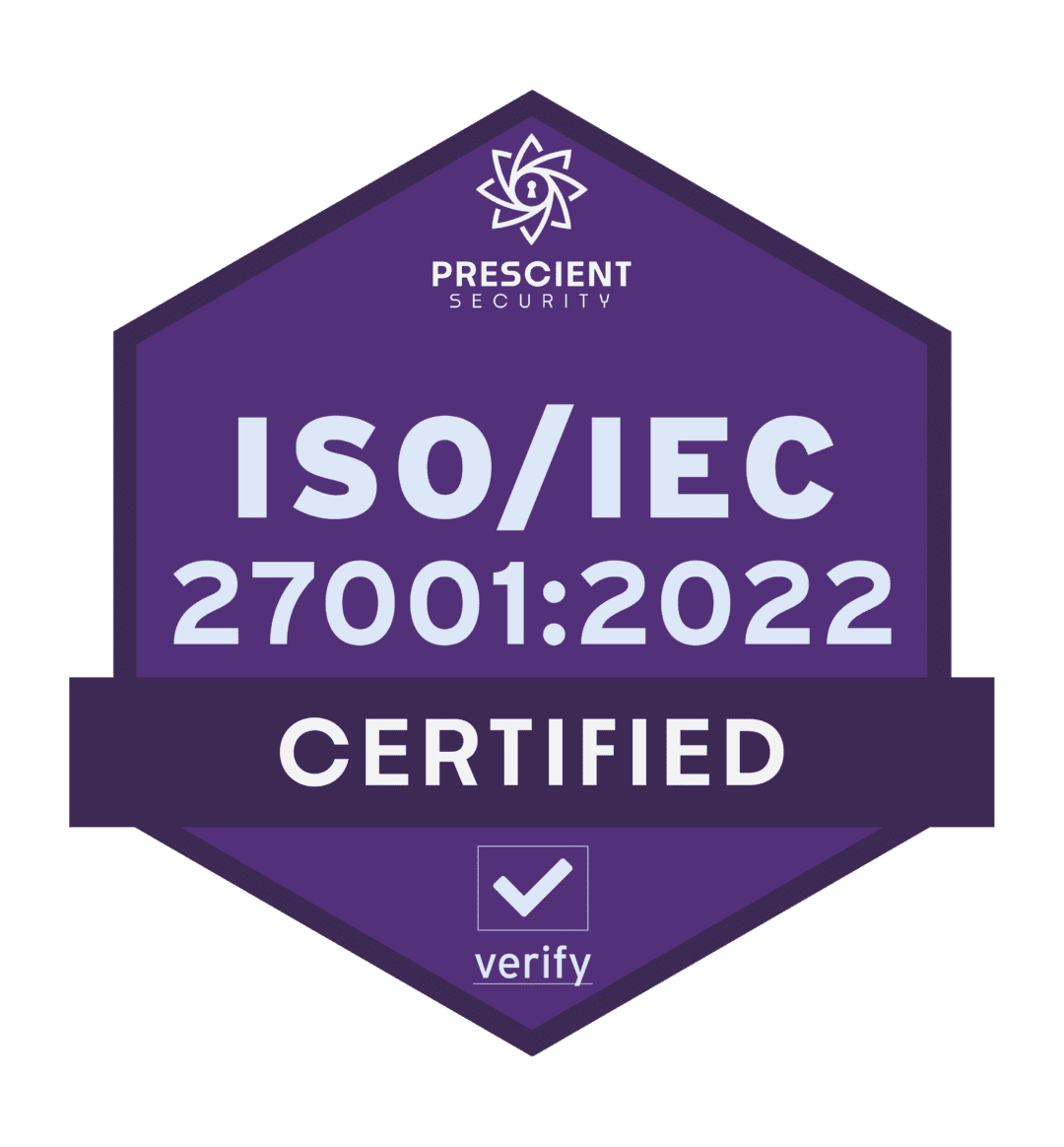Emily McGuire
How one marketing expert started with virtually zero knowledge about email and went on to generate over $80 million in campaign revenue for clients during her career. This is Emily McGuire’s story about Pushing Send.
Emily McGuire is the owner and Chief Email Marketer of Flourish & Grit: An Email Marketing and Automation Studio. She has spent the past decade in tech, sending thousands of email campaigns and earning clients over $80 million in email campaign revenue.
Key Points From This Episode:
- Emily fell in love with email at the beginning of her career by chance but quickly began to focus on emails because of the many touchpoints it creates and the ability to track someone along their journey.
- She shares her very relatable struggles and questions that she had as she navigated the email world and how she has tackled these issues to find success.
- Emily breaks down the process she uses for uncovering hidden revenue in an email list and the power behind using these foundations to find out who your customer really is and the goals you want to accomplish.
- A crucial piece of being a good marketer and copywriter is speaking to people like they’re actual human beings instead of somebody who hasn’t bought from you yet to help you establish a relationship and make a meaningful connection with them.
- Emily believes that you need to take a step back as a business owner so that you can have a bird’s eye view of what a customer may be seeing when they encounter you. Use empathy and trust your marketer.
Tweetables:
“How do we improve? This is what we’ve tried in the past. Should we try it again? Or should we go out and see what’s going on? What other brands are trying and try that too.” – @flourishandgrit
“How are we directing subscribers from the inbox to whatever that goal is starting there and then finding all of the pieces we need to get there?” – @flourishandgrit
“Being able to step back and really lay out those foundational pieces is the heart of what makes a really powerful email program. Because again, it helps you see, it helps you see your audience and who they are.” – @flourishandgrit
“Make it really easy for them to make that connection between, Oh, here’s my problem. And here’s how they solved my problem. And you’re doing that mental work for them. So, they don’t have to jump through all those hoops.” – @flourishandgrit
“When you are living and breathing your business and your work, when you are just so in it, it is so hard to take a step back and get that bird’s eye view, those fresh eyes on what a customer might be seeing when they first encounter you.” – @flourishandgrit
“You need to trust your marketers. You need to trust your team when they tell you, this is what our data tells us. This is how our audience is responding to certain types of messages.” – @flourishandgrit
Links Mentioned in Today’s Episode:
- Emily McGuire: LinkedIn, Twitter
- Bryan Kelly: LinkedIn
- rasa.io
- Flourish + Grit
Episode Transcript
Emily McGuire:
Somebody told me when I was, I was getting a master’s degree in communication and somebody told me like, you have to get into newsletters to really expand your skillset. It’s a marketable skill. And I was just like, Oh, okay, whatever. Sure. I don’t even know what that really means. And so, no, it’s like one of those things that you, you sort of take for granted, you know, it sort of functions in the background. You don’t really notice it until it’s done really poorly. You know what I’m saying? Like most things you don’t notice it until it breaks because it’s just humming along in the background.
Bryan Kelly:
From rasa.io, the free tool for sending smarter and better email newsletters. This is Pushing Send, a show featuring people who send emails their subscribers actually want to read I’m Bryan Kelly and on today’s show how one marketing expert started with virtually zero knowledge about email and went on to generate over $80 million in campaign revenue for clients during her career. Here’s Emily McGuire explaining how she first got into email. Why did you choose to focus your career and professional life all on email?
Emily McGuire:
Yeah, so I started out, so I was a digital marketing generalist and was managing a brand’s social media accounts in house. And they were like, well, we need somebody to do this email thing. You do computers, you can do this. Right? So I got to thrown on my plate. Like a lot of people do and fell in love with it because it’s much more than sort of, I feel like a flash in the pan, like social media can be because it’s equal parts, creative and analytical, and you can track your relationship with your customer much more easily, right? So you have all these data touch points that you can pull into one contact and you have a way to keep reaching out to them. Based on that contact information. In this case, an email address, I found another job at an econ, a large e-commerce company, only doing email, and really got to dig deep into all those practices and testing and automations and expanded the world of digital marketing to much more technical pieces and really being able to track somebody along their journey.
Bryan Kelly:
What were some of the struggles or maybe challenges you had early on when you first started working in email?
Emily McGuire:
I mean, learning any new thing, right? It can feel really daunting because there’s this well, it’s anxiety provoking to not know what you don’t know. And on top of that, you are dealing with an audience of, I think at that company, the list I was working with was somewhere around 30,000. And so you have an audience of 30,000 people. You’re sending out an email that you can’t really change after you click send, at least in the email service provider I was using. So if you make a mistake, it’s like, well, and I was inexperienced enough at the time. I hadn’t made that many mistakes. And so like making a mistake felt like the end of the world, you know what I’m saying? It just, it was terrifying. But as you get more experienced and you learn more about these things, you learn that, Oh yeah, mistakes are part of it. That’s just, you’re human and that’s just, what’s going to happen. And no matter how many checklists you have or how many eyeballs are on the emails. So when I first started out, I was the only one doing it. I did have somebody helping me craft copy a little bit. I had somebody designing the graphics, but other than that, I was in charge of the strategy and the execution. And I was one of the few people who was actually checking the email to make sure everything was correct. The company where I dove deep into email, there were five of us on the email team alone. And each email would get checked by, I don’t know, maybe six or seven people before it went out the door. And even then we didn’t catch all the mistakes because there’s just so many, there’s so many components that go into an email. So all that being said, yeah. A lot of anxiety, Google became my best friend, just researching and researching and researching because people would ask me questions that I didn’t have the answers for.
Bryan Kelly:
So what were some of those questions? Can you share some of that?
Emily McGuire:
Why is my email in the spam folder? Like internal folks would just yell over at me across the cubes and be like, Oh, our email ended up in my spam folder. Okay. I am going to try and figure that out. If that whole world of deliverability is its own Pandora’s box that I had no idea. Like I thought, oh, I’ll just check a setting. Maybe that’s why. Yeah, no, it’s a whole whole world. Why are the open rates so low? Where can we buy an email list? And so I’m like researching, where do I rent or buy an email list? And then, you know, I learned about email service providers and their own terms of use that you can violate by uploading a purchased email list. So those kinds of things, and one time somebody asked, uh, so my designer had put a gif in the email and at the time the, the CEO of that company saw it and was like, we need to put that in a print ad. How do we get that in a print ad? So yeah, basically why aren’t we Harry Potter? But yeah, those are the big ones. Why is this in the spam folder, purchasing a list and how do we increase our open rates? How do we increase our click through rates, those kinds of things, the real vanity metrics that you’re trying to figure out without much of a strategy to go behind it
Bryan Kelly:
For those types of observations, how did you come to this conclusions on your own? Was it like trial and error or did you have a mentor?
Emily McGuire:
Yeah, so both I would say, so I was coming into a company where they’ve been doing, people had been there for decades. And so these relationships and ways of doing had been long established before I came in and I’m coming in fresh eyed like, Oh, we can do all these things. And people are like, Oh, this is the way we’ve been doing it, chill out. Um, it was really fascinating. So eventually, or what it really looked like was people would say, we need to improve this metric. We need to improve this metric. How are we going to do that? And so a lot of it was okay, well I have these ideas. What if we tried this and we would try it. And then some of it would be a lot of looking at trends and research online about email marketing. So subscribing to competitors or brands that were doing email really well, seeing what they were doing and either loving it or hating it and trying it out on our audience. And that meant testing our email service provider that we use in house. We also had consultation time with them. And so they would give us best practices and we would always test them. So yeah, they would give us, uh, things to try and we would try those as well. So it was really like a collaborative, it was great because it was a really collaborative environment where it was like, okay, we need to improve. How do we improve? This is what we’ve tried in the past. Should we try it again? Or should we go out and see what’s going on? What other brands are trying and try that too.
Bryan Kelly:
When we come back, Emily explains how we can all uncover hidden revenue in our email lists. I’m Bryan Kelly, and you’re listening to Pushing Send from rasa.io.
rasa.io:
Creating email newsletters takes a lot of time. You might curate articles, write content, tweak your template, and look up metrics and not to mention you’re probably doing all of this once a week. well at rasa.io, we said enough and built a free tool to simplify the process, which saves you time. It also uses AI to personalize emails for each subscriber based on their interests. That means they get stuff they like to read. Want to see how it works? Visit www.rasa.io and click how it works.
Bryan Kelly:
Welcome back to Pushing Send. I’m Bryan Kelly, Emily McGuire has built an excellent reputation for herself in email marketing circles. And she skilled at clearly articulating how to leverage an email list to our advantage. Here she is breaking down her process for me, a big statement you make on your website is about uncovering hidden revenue in an email list. So how does somebody go about that process? What does that look like?
Emily McGuire:
The first thing I start with for anybody is, okay, what are your goals for email? Because if you don’t have a goal, you don’t have focus and you don’t know where you need to fill in pieces. Right? And how to measure success. That’s usually where I start, because most people shockingly, large and small businesses don’t have clearly defined goals for their marketing efforts or particularly email. They’re just like, we want it to do better. Well, how do we know what better is? So that’s where it starts because we need to also know how are we directing subscribers from the inbox to whatever that goal is starting there and then finding all of the pieces we need to get there. And so that might look like, what do you already have that maybe you are using that can help you get to that goal? And it might look like, well, what other tools do we need to help you get there? So that’s where it starts. And then it goes into cleaning up the data cause that’s usually where most people haven’t even looked at, right? They don’t have a data strategy because really what’s powerful about email is knowing who your email subscribers are, so that you can more directly target them and not have clean data to do that. Then you can’t do it. Right. That’s where email automation in particular fails is if you have terrible data, you can’t automate to the right people. And that’s where you’ll see emails that go out with F name instead of your actual first name know what I’m saying, the data wasn’t there. So yeah, those two pieces are the biggest ones. Um, those are the foundational pieces and people typically haven’t had the time to step back and strategize about those things because they are just of running at a full sprint, trying to keep up with everything. And so being able to step back and really lay out those foundational pieces is the heart of what makes a really powerful email program. Because again, it helps you see, it helps you see your audience and who they are. It gets you once that data is cleaned up. And once you have those goals, it gives you direction. It gives you focus. So you can, instead of just sort of throwing stuff at the wall to see what sticks really being able to focus on what does and doesn’t work or what you want to accomplish and what is, and isn’t working to get you, there is super powerful.
Bryan Kelly:
Now, I’ve seen, you mentioned this online about how all this stuff is important, but it’s even more important when combined with compelling copy. Do you guide clients on that piece of it once the data is all cleaned up and automations ready to go?
Emily McGuire:
Well, I mean, I think a good marketer and a good copywriter will always have to really connect with your audience. We’ll start with empathy and really putting yourself in your customer’s shoes and thinking about what are they struggling with? What are their aspirations? How can you help solve their pain points? Again, a foundational piece of being a good marketer and be a good copywriter so that you can speak to people like they’re actual human beings instead of a member of your list or somebody who hasn’t bought from you yet and helps you establish a relationship and make a meaningful connection with them. And that piece is crucial. So if you don’t know what your customers are struggling with, if you don’t know how your offer or your products or services can help them achieve their goals, how can you expect them to make that connection on their own? That puts a lot of the mental energy and work on your subscriber. And a marketer knows that, making it super easy for somebody to understand what they need to do in order to purchase or work with you also make it really easy for them to make that connection between, Oh, here’s my problem. And here’s how they solved my problem. And you’re doing that mental work for them. So they don’t have to jump through all those hoops. And that might seem obvious for some people, but when you are living and breathing your business and your work, when you are just so in it, it is so hard to take a step back and get that bird’s eye view, those fresh eyes on what a customer might be seeing when they first encounter you. It happens to the best of us. I like I can market anybody’s business all day, every day, but my own is so hard. It’s all painful sometimes.
Bryan Kelly:
In your experience. Why do you think so many of us struggle with empathy while writing copy for our emails? Of course, I knew we’re all very busy, but beyond that.
Emily McGuire:
There are a couple, one is just, it’s a mindset thing. You know, just the way you, your persona, it’s essentially your perception of the situation, right? It can be, you know, we’re used to writing in the first person or in a very dry third person, but like with businesses in particular, there’s this idea of being professional is to be very dry. And we’re confident in talking about our business and ourselves and using that language might help you get some ideas going, but it’s certainly self-centered. And not everybody understands that. Being able to talk to somebody on their terms and their level seems intuitive, but I don’t think everyone understands what it means to have a relationship and build a relationship. Right? Cause that’s what you’re doing. It’s establishing and building relationship with your customers. It’s any marketer’s job. The other is that I often run into, especially in some larger organizations, this is an easy trap to get into some people, see what their competitors are doing and think, Oh, that’s what I need to be doing. And without testing it, without really thinking about how it impacts their particular audience, they’re just like, Oh, they’re doing it. Let’s do that without, you know, thinking it about it or processing it. And it’s like, no, you need to trust your marketers. You need to trust your team when they tell you, this is what our data tells us. This is how our audience is responding to certain types of messages. And just because something looks flashy and cool doesn’t mean that’s right for your business. And that’s where testing comes in, right? That’s where looking at trends and best practices might look cool. And they might look like a great idea, but are they a great idea for your audience? So yeah, I see people get really stuck in the, well, this is what our competitors are doing. And it’s like, well, you’re not your competitor. If everybody was doing the same thing in your space, in your industry, then nobody would differentiate themselves. And it would look like everybody would look the same. So what’s the point. Those are two big things I see people do is like they just get stuck in an old tactics and maybe haven’t translated those to the current digital marketing landscape and then looking at hyper-focusing on their competitors and what they’re doing and thinking they have to do everything they’re competitors are doing.
Bryan Kelly:
Emily clearly has domain expertise centered on email marketing. And this expertise has been honed through years of hands-on trial and error, plus a willingness to buck best practices and just experiment. If you’re not already doing this for yourself, when it comes to email I’d encourage you to run an experiment or two, to see what insights you can uncover about your subscribers, I’m sure you’ll find some pleasantly surprising things pop up coming up on our next episode, we’ll hear from Stefan von Imhof a product management expert and executive who runs a niche email newsletter on the sub stack platform. Stefan talks about email newsletters as a new type of investment vehicle known as an alternative asset. It’s a fascinating topic if you’re a fan of email, so you don’t want to miss what Stefan has to share. If you’re listening to Pushing Send for the first time, please be sure to subscribe at Apple podcasts or wherever you’re listening so you don’t miss any future episodes. Also, if you’ve enjoyed what you’ve heard today, I’d encourage you to check out a few of our other episodes while you’re here. Lastly, leaving a review will help us share these stories with others, just like yourself. Thanks in advance for doing that. I’m Bryan Kelly, and you’ve been listening to Pushing Send from rasa.io.














